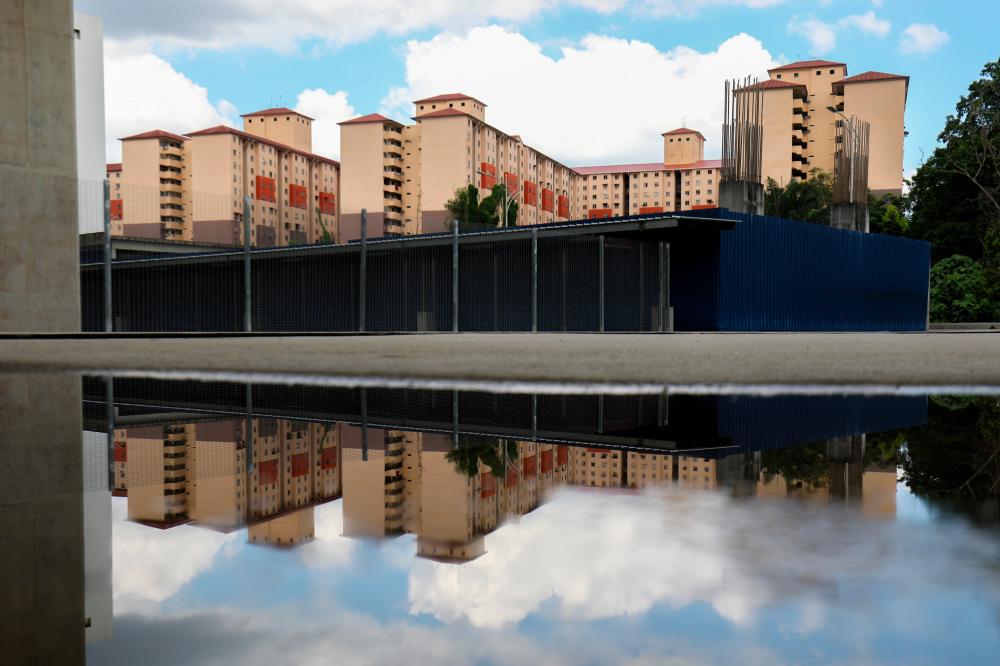PETALING JAYA: Any housing project, especially affordable housing, should have access to basic amenities, industry players and stakeholders told theSun.
Emir Research head of social, law and human rights Jason Loh said affordable housing projects in Malaysia generally have basic amenities.
“Residents have internet connectivity and accessibility to clinics and schools. However, when it comes to low-cost flats under the People’s Housing Projects (PPR), certain amenities such as playgrounds and government clinics aren’t readily available. This situation could be counterbalanced with proximity to transport connectivity such as bus and commuter rail (LRT),” he said.
Loh noted that land scarcity is part of the problem that contributes to the lack of affordable housing being built near public amenities.
“The problem is land scarcity for affordable housing in the core areas of the Klang Valley conurbation or central Greater Kuala Lumpur. Hence, affordable housing has to be built in areas that are not as infrastructurally developed in terms of transport connectivity, particularly when it comes to rail transit,” he said.
Nevertheless, Loh noted that the government has been very sensitive to the concept of “transit-oriented development” (TOD) – the construction of affordable housing around easy accessibility to LRT and MRT stations.
“For example, the National Physical Plan Policy (NPP27) in 2005 and the NPP32 in 2010 clearly stated that ‘TOD shall be promoted as the basis for urban land use planning to ensure viability of public transport’,” he said.
To solve the issue of basic amenities being made available closer to housing for the masses, Loh suggested the government start with proper planning and consult stakeholders such as other ministries and agencies like the Health Ministry and Education Ministry, local governments, developers, buyers, and existing residents in the surrounding proposed development projects.
“Planning and coordination of implementation and outcome is key. The problem in this specific area of affordable housing planning is that our bureaucracy lacks a proper long-term strategy and vision as embodied in the IOOI model – Input, Output, Outcome and Impact. We can be quite myopic in this regard,” he said.
He added that there is also a critical need for our planners to focus on the impact and implication of housing development and population relocation (and concentration) for the longer term.
“This means we should be planning also to meet the needs of a growing population by considering, for example, how to make the wider area to be more self-contained across the spectrum, not just in terms of transport connectivity but also office space and retail space especially the availability of hypermarkets,” he said.
“In turn, the multiplier effect will spill over into the upgrading of transport connectivity such as building rail transit stations that can in turn encourage the construction of more affordable housing in the location,” he noted.
Meanwhile, Khazanah Research Institute director Dr Suraya Ismail believes all homes should have basic amenities, whether they are in the affordable range or otherwise.
“Housing projects must not be seen in isolation from the higher purpose of creating a decent standard of living for all people, irrespective of the income levels. Therefore, housing projects should be located within the spatial planning or designing cities for society’s betterment,” she said.
She also noted that the alignment of public transport’s main routes to households’ travelling patterns should be more exact in order for households to experience genuine benefits of proximity to public transport.
“This is not necessarily the case and the value of locating affordable housing near public transport remains a numerical value, and artificial as well. The most recent figure from the Transport Ministry (2019) showed only 20% of the population using public transport.”











